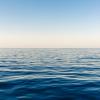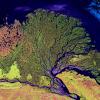About
Introduction
The Community of Practice on Floating and Resilient Development conducted an exchange on the 29th of September, 2022, to share information on solutions and engage in discussion with cities and interested planners and experts. All interested persons were welcome to register.
Objectives of the meeting:
1. Raise awareness and increase knowledge on the diversity and possibilities of floating and resilient solutions (housing, energy, agriculture) among planners and decision-makers. Showcase high-income solutions as well as affordable solutions for the most vulnerable populations.
2. Provide an opportunity for informal networking and sharing of implementation challenges and opportunities through breakout rooms.
3. Building practical knowledge and capacity by interacting with experts on best/good practices across a variety of topics: technology, research, governance, social considerations, research, design, engineering and much more.
Summary
There were 95 participants engaged in the knowledge exchange, including participants from South Africa, Poland, Netherlands, Colombia, Bangladesh, Australia, Singapore and other countries. The program began and concluded with a plenary session chaired by Rutger de Graaf-van Dinther from the Blue Revolution Foundation, a core member of the community of practice. There were two rounds of thematic breakout room discussions.

Outcomes
Summary Report
The summary report includes emerging insights, key messages for policymakers and the knowledge gaps discussed in each breakout room.
Presentations and Recordings
Breakout room: Floating Future - large national research proposal for a resilient future
How can we keep our densely populated country, the Netherlands livable? There is an increasing demand for space for living, industry, energy transition and food production. To date, approximately 60% of the Netherlands is flood-prone, and due to climate change, the threat of flooding increased. The water may however also offer an opportunity for creating flood-resilient living space by implementing large-scale floating developments. National Research Initiative “Floating Future” is a collaboration between more than 30 stakeholders including universities, research initiatives, companies, NGOs, and government agencies (national, regional and local levels). Floating Future integrates the science fields of Governance, Technology and Ecology to investigate how we can achieve upscaling of floating developments as a climate adaptive and responsible alternative that is socially accepted. We develop pilot cases for inland (lakes, rivers and polders), coastal (port city) and offshore (North Sea) applications.
Breakout room: Floating agriculture - high and low-cost solutions
Increasingly, with climate change, vulnerable countries need to understand how to do things with less land and more water. Floating agriculture or gardens for herb and vegetable production is an ancient process that can be adaptive in the face of changes in water levels.
Traditionally, farmers will construct a floating platform of greenery, such as water hyacinths, several feet into the water to create a base. This floating garden is then used to plant vegetables without the need for soil, creating conditions that adapt to even the rainiest of seasons. It’s a group effort where family members and friends create these structures that can be more than 50 m long.
Floating agriculture is regarded as a cultural heritage. Many traditional methods exist that have the potential to be revived and upscaled to fit contemporary needs.
Breakout room: Architectural design on the water - an attractive, sustainable, resilient and affordable style of living
The room discussed architectural opportunities, considerations and sustainable design innovations for floating homes and buildings.
Breakout room 4: Environmental benefits of floating development
Floating solutions offer several opportunities for environmental sustainability, for example, the location on water provides many solutions for energy efficiency. In addition, floating development allows connectivity of rivers and water bodies, provides substrate and habitat and eases the pressure on sand mining. Read more here about this topic.
Breakout room: Upscaling floating development- Sharing initiatives and plans for large-scale floating development
Blue21 has been working on the proof-of-technology of floating urban development for the past 15 years. With many floating projects now realized by different innovators, both in the Netherlands and internationally, the company thinks that the sector should be now moving towards the proof-of-scale. It is crucial to demonstrate that floating urban development can be a feasible alternative on a scale that is relevant to the size of the global challenges we are facing. In this breakout room, initiatives and plans within the network of Blue21 for large-scale floating development were shared.
Breakout room: Making flood-resilient housing affordable
The room explored opportunities and challenges for making affordable flood-resilient housing. The speaker discussed low-cost housing in the Philippines, cost-effective and flood-resilient amphibious buildings in India and Houses on stilts in Mozambique.
Breakout room: Floating solar
Floating solar photovoltaic (FPV) is not only about technical design and construction, but more importantly about inclusive design, taking into account ecology (deep or shallow water, stagnant or running water), water management, storm risk, etc. In this session, Johan and Bjorn shared with us some pilot examples: seasonal displacement, sun-tracking, and flexibility for mowing. A FPV example with light biobased construction which can be temporarily submerged in the event of bad weather were also introduced.
Breakout room: Navigating regulations for floating developments
Seaphia works to best plan and execute innovative aquatecture projects with special regulatory frameworks. In the breakout, Seaphia architects shared examples of regulatory research they've conducted or are dealing with in some of the floating projects they are working on; from post-war regulations in communities on stilts, property titles and national parks restrictions, to energy rules for large-scale developments. In this talk, participants learnt about navigating various regulatory requirements they've encountered in the floating projects they are working on in Colombia.
Further resources
-
 Presentation on Rotterdam Floating Farm
Presentation on Rotterdam Floating Farm
-
 Presentation on Bangladesh Floating Gardens
Presentation on Bangladesh Floating Gardens
-
 Presentation by Shahryar Habibi, Penn State U Floating Architecture
Presentation by Shahryar Habibi, Penn State U Floating Architecture
-
 Presentation by Jelle Vedder, Bartels A & Vedder Floating Architecture
Presentation by Jelle Vedder, Bartels A & Vedder Floating Architecture
-
 Presentation by Rosalie Akerman, Nets23D, Floating Architecture
Presentation by Rosalie Akerman, Nets23D, Floating Architecture
-
 Presentation by Rui Lima, Indymo, Floating Enviro Benefit
Presentation by Rui Lima, Indymo, Floating Enviro Benefit
-
 Presentation by Robbert Jak, Wageningen Marine Research, Environmental Benefits and Issues of Floating
Presentation by Robbert Jak, Wageningen Marine Research, Environmental Benefits and Issues of Floating
-
 Presentation by Chris Hackney, Newcastle U, Sand Mining & Floating Developments as a Solution
Presentation by Chris Hackney, Newcastle U, Sand Mining & Floating Developments as a Solution
-
 Presentation on Upscaling Floating Development Breakout sessions
Presentation on Upscaling Floating Development Breakout sessions
-
 Presentation by Finch Floating Homes, Affordable Floating Options
Presentation by Finch Floating Homes, Affordable Floating Options
-
 Presentation on Easy Housing, Affordable Flood-resilient Options
Presentation on Easy Housing, Affordable Flood-resilient Options
-
 Bjorn Purdon, Waterschap Rivierenland, Floating Solar Ecological Considerations Slide
Bjorn Purdon, Waterschap Rivierenland, Floating Solar Ecological Considerations Slide
-
 Presentation by Johan Bakker, Waterschap Rivierenland, Floating Submersible Solar
Presentation by Johan Bakker, Waterschap Rivierenland, Floating Submersible Solar
-
 Presentation by Nanma Gireesh, NestAbide, Amphibious Housing
Presentation by Nanma Gireesh, NestAbide, Amphibious Housing
- Floating Future a Nation Research Project in the Netherlands - breakout room recording
- Environmental Benefits of Floating Development - breakout room recording
- Floating Agriculture - breakout room recording
- Floating Architecture - breakout room recording
- Scaling up Floating Developments - breakout room recording
- Affordable Floating and Flood-resilient Options- breakout room recording
- Floating Solar - breakout rom recording
- Navigating regulations for floating developments knowledge exchange breakout room recording
























Comments
A message booard has been created for this event, join the conversation here: https://communities.adaptationexchange.org/forum/floating-and-resilient-development-knowledge-exchange-2022
The forum will be used after the event for sharing additional questions, insights and resources.